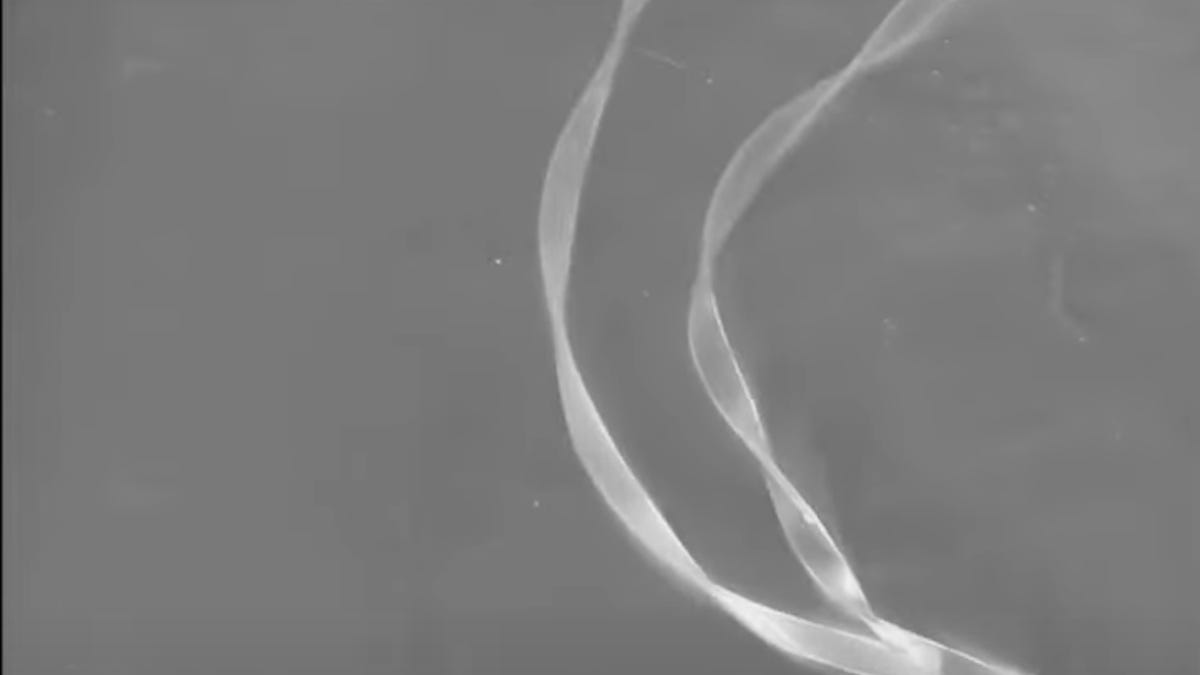Watch a Robot Shaped Like Pasta Escape a Maze
These "soft robots" could help us gather energy from natural environments.

A close-up of the ribbon robots.
A robot that looks like a piece of rotini pasta can propel itself through a maze without humans helping it.
Researchers from North Carolina State University and the University of Pennsylvania developed these "soft robots" that can find their way around complex environments and detailed their findings in a paper published Monday in the journal Proceedings of the National Academy of Sciences.
The new design for the robots is important because it could assist in gathering thermal energy from natural environments by rolling on the ground.
The pasta-shaped bots don't rely on computer signals to dictate their movements. Instead, they use a kind of robot muscle memory called physical intelligence, which means that "structural design and smart materials are what allow the soft robot to navigate various situations, as opposed to computational intelligence," said Jie Yin, NC State associate professor and one of the paper's authors.
Watch below as a soft robot twists around the walls of a maze to freedom.
The robots are made from liquid crystal elastomers, a plastic-like material with heat-sensitive properties that are key to the robot's movement. The material the robots are made from is shaped like a ribbon, then twisted into a pasta shape.
First, the robot is placed on a surface that's heated to at least 55 degrees Celsius (131 degrees Fahrenheit). This temperature is generally hotter than the air around it. Once the robot touches the surface, it contracts. The part of the robot that's not touching the surface doesn't contract. This imbalance causes the robot to roll. If the surface grows hotter, the robot rolls faster.
Yin said this method of auto propulsion has been done before, using smooth-sided rods. But using that shape has a drawback: the rod gets stuck in place and just spins around. "The soft robot we've made in a twisted ribbon shape is capable of negotiating these obstacles with no human or computer intervention whatsoever," Yin said.
The researchers solved the problem of moving around obstacles by creating a spiral shape. If the end of the robot hits an object, the robot just rotates around it. If the middle of the robot comes in contact with an object, it "snaps" in a rapid release of stored energy that makes the robot jump and reorient before it lands.
In this way, the robot functions like a robot vacuum used in homes, Yin said, "except the soft robot we've created draws energy from its environment and operates without any computer programming."
Why is this design important? According to Yin, it could provide insight into how we can make soft robots that can harvest heat energy from natural environments and navigate complex areas like the surface of harsh deserts.

